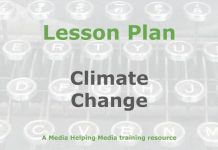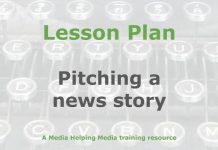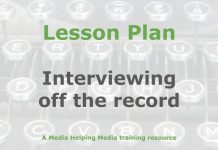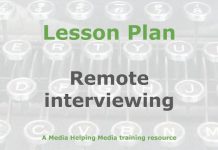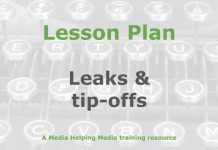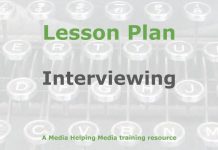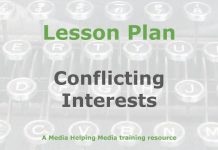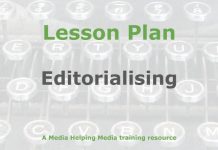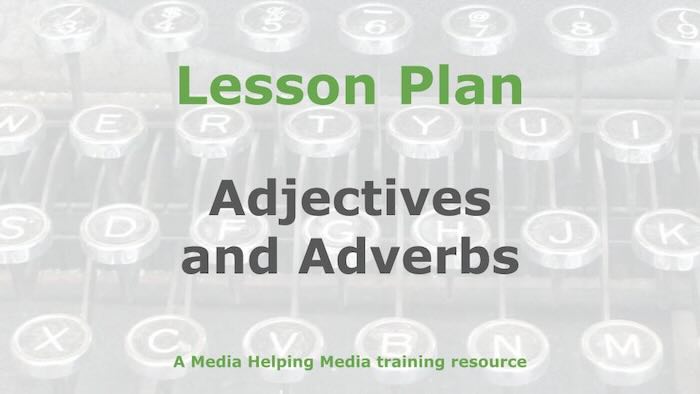 When it comes to writing news stories adjectives and adverbs should be avoided wherever possible.
When it comes to writing news stories adjectives and adverbs should be avoided wherever possible.
This lesson plan is based on the article ‘The use of adjectives and adverbs in journalism‘ which we suggest you read before adapting for your own purposes.
Learning objective
Students will identify and evaluate the use of adjectives and adverbs in news writing, determining their necessity and impact on clarity. They will apply strategies to minimise unnecessary modifiers, enhancing the conciseness of their writing.
- Student-facing objective: By the end of this lesson, the student will be able to assess the value of adjectives and adverbs in news articles, deciding if they’re needed and making their writing clearer by cutting out unnecessary and, sometimes, weighted words.
- Standards: Students will learn that adjectives and adverbs can clutter up news stories and should be avoided wherever possible.
Learning activities
Warm-up
Display a short paragraph from a news article. Ask students to read it silently and identify any adjectives and adverbs. Have them underline these words. Then, in pairs, discuss which modifiers could be removed without changing the meaning. Share findings with the class, focusing on how removing unnecessary modifiers can enhance clarity.
Direct instruction
- Conceptual understanding: Begin with a brief explanation of adjectives and adverbs. Define adjectives as words that modify nouns and adverbs as words that modify verbs, phrases, clauses, or sentences. Use real-world examples from journalism, such as “The tragic accident” and “He quickly ran,” to illustrate how these modifiers can clutter writing. Discuss the importance of conciseness in journalism and how excessive use of modifiers can obscure meaning.
- Procedural skills and fluency: Present a series of sentences from news articles that contain adjectives and adverbs. Ask students to identify and underline these modifiers. Then, guide them in evaluating the necessity of each modifier. For example, in the sentence “The very large crowd gathered quickly,” discuss which words can be removed or replaced to maintain clarity and conciseness.
- Application: Challenge students to rewrite a short news paragraph, removing unnecessary adjectives and adverbs while maintaining the original meaning. Use a paragraph such as: “The incredibly fast car chase ended in a tragic accident on the busy highway.” Encourage students to focus on precision and clarity. Discuss as a class how the revised versions improve the text’s readability and impact.
Guided practice
Think, Pair, Share: Guide students through a collaborative exercise to reinforce their understanding of minimising adjectives and adverbs in writing.
- Think: Present a sentence from a news article with multiple adjectives and adverbs, such as “The very loud and incredibly fast car chase ended tragically.” Ask students to individually identify and consider which modifiers are unnecessary.
- Pair: Have students pair up to discuss their choices. Encourage them to justify why certain modifiers can be removed or replaced for clarity and conciseness.
- Share: Invite pairs to share their revised sentences with the class. Facilitate a discussion on the impact of their changes on the sentence’s clarity and meaning.
- Class Feedback: Collect feedback from the class on which revisions were most effective and why. Highlight the importance of precision in journalistic writing.
- Reflection: Ask students to reflect on how this exercise can be applied to their own writing. Encourage them to consider the balance between necessary detail and conciseness.
Independent practice
- Provide students with a worksheet containing sentences from news articles filled with adjectives and adverbs.
- Instruct students to identify and underline these modifiers.
- Ask students to rewrite each sentence, removing unnecessary adjectives and adverbs while maintaining the original meaning.
Circulate the classroom to offer guidance and support as students work through the exercise.
Assignment
Ask students to answer these questions:
- How can removing unnecessary adjectives and adverbs improve a news article?
- Give an example of a sentence where an adjective or adverb is necessary for clarity.
- What’s one question you still have from today’s lesson?
Here are some suggested answers:
- Suggested answer to Question 1: Removing unnecessary adjectives and adverbs can make the writing clearer and more concise, helping the reader focus on the main points.
- Suggested answer to Question 2: In the sentence “The usually quiet town was bustling with activity,” the adverb “usually” is necessary to convey the change in the town’s typical state.
Teacher resources
Differentiation guide
- Advanced learners: Encourage them to explore the nuanced use of adjectives and adverbs in different writing styles beyond journalism, such as creative writing or poetry. Challenge them to identify when modifiers enhance meaning and when they detract from clarity. Have them rewrite a complex news article, focusing on precision and impact.
- Striving learners: Provide additional examples and practice sentences with clear, simple language. Use visual aids, such as colour-coding, to help them identify adjectives and adverbs. Offer sentence starters or templates to guide their rewriting process. Pair them with peers for collaborative exercises to build confidence and understanding.
- Background reading: This lesson plan is based on the article ‘The use of adjectives and adverbs in journalism‘ on Media Helping Media which we suggest you read before adapting for your own purposes.
Notable definitions
- Adjective: A word that modifies a noun, providing more information about it, such as its size, colour, or quality.
- Adverb: A word that modifies a verb, phrase, clause, or sentence, often indicating manner, time, place, or degree.
- Modifier: A word or phrase that changes or adds to the meaning of another word, often an adjective or adverb.
Required materials
- Copies of a short news article for each student
- Highlighters or coloured pens for underlining
- Whiteboard and markers
- Worksheets with sentences from news articles
- Projector for displaying examples
- Optional: Access to computers or tablets for digital editing exercises
Lesson summary
- Warm-up
- Direct instruction
- Guided practice
- Independent practice
- Assignment
The free teaching tools at the Khan Academy were used as a basis for converting the original article into a lesson plan.
Related articles
